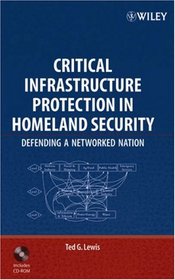Search -
Critical Infrastructure Protection in Homeland Security: Defending a Networked Nation
Critical Infrastructure Protection in Homeland Security Defending a Networked Nation
Author:
A scientific approach to the new field of critical infrastructure protection — This book offers a unique scientific approach to the new field of critical infrastructure protection: it uses network theory, optimization theory, and simulation software to analyze and understand how infrastructure sectors evolve, where they are vulnerable, and how th... more »
Author:
A scientific approach to the new field of critical infrastructure protection — This book offers a unique scientific approach to the new field of critical infrastructure protection: it uses network theory, optimization theory, and simulation software to analyze and understand how infrastructure sectors evolve, where they are vulnerable, and how th... more »
ISBN-13: 9780471786283
ISBN-10: 0471786284
Publication Date: 4/21/2006
Pages: 486
Edition: Har/Cdr
Rating: ?
ISBN-10: 0471786284
Publication Date: 4/21/2006
Pages: 486
Edition: Har/Cdr
Rating: ?
0 stars, based on 0 rating
Genres:
- Computers & Technology >> Certification >> CompTIA
- Computers & Technology >> Networking & Cloud Computing >> Networks, Protocols & APIs >> Network Security
- Computers & Technology >> Software
- Computers & Technology >> Web Development & Design >> Security & Encryption >> Encryption
- Science & Math >> Biological Sciences >> Biotechnology
- Science & Math >> Technology
- Environmental
- Industrial, Manufacturing & Operational Systems >> Health & Safety
- Uncategorized >> International & World Politics >> National & International Security




